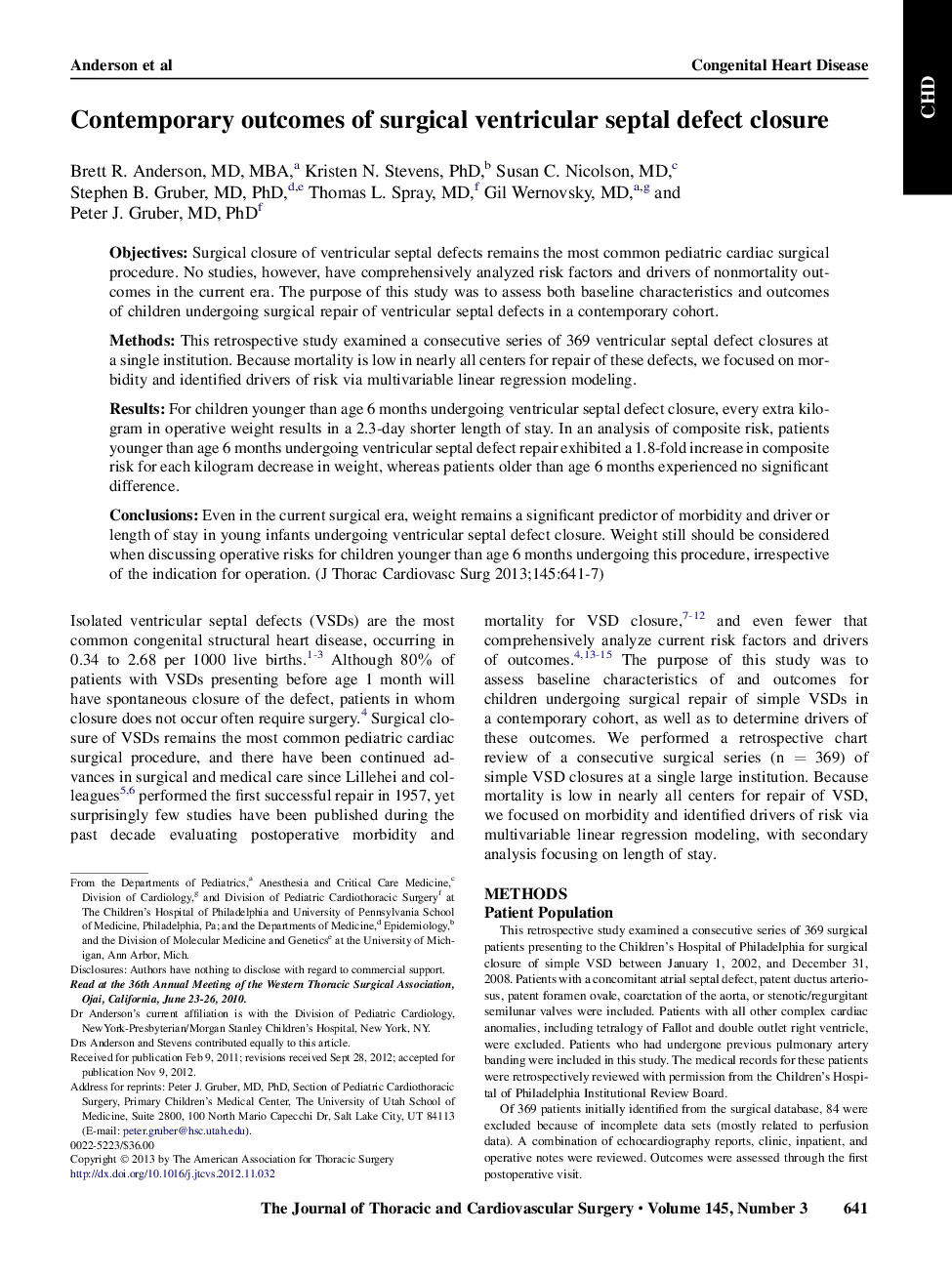| Article ID | Journal | Published Year | Pages | File Type |
|---|---|---|---|---|
| 2981099 | The Journal of Thoracic and Cardiovascular Surgery | 2013 | 7 Pages |
ObjectivesSurgical closure of ventricular septal defects remains the most common pediatric cardiac surgical procedure. No studies, however, have comprehensively analyzed risk factors and drivers of nonmortality outcomes in the current era. The purpose of this study was to assess both baseline characteristics and outcomes of children undergoing surgical repair of ventricular septal defects in a contemporary cohort.MethodsThis retrospective study examined a consecutive series of 369 ventricular septal defect closures at a single institution. Because mortality is low in nearly all centers for repair of these defects, we focused on morbidity and identified drivers of risk via multivariable linear regression modeling.ResultsFor children younger than age 6 months undergoing ventricular septal defect closure, every extra kilogram in operative weight results in a 2.3-day shorter length of stay. In an analysis of composite risk, patients younger than age 6 months undergoing ventricular septal defect repair exhibited a 1.8-fold increase in composite risk for each kilogram decrease in weight, whereas patients older than age 6 months experienced no significant difference.ConclusionsEven in the current surgical era, weight remains a significant predictor of morbidity and driver or length of stay in young infants undergoing ventricular septal defect closure. Weight still should be considered when discussing operative risks for children younger than age 6 months undergoing this procedure, irrespective of the indication for operation.
